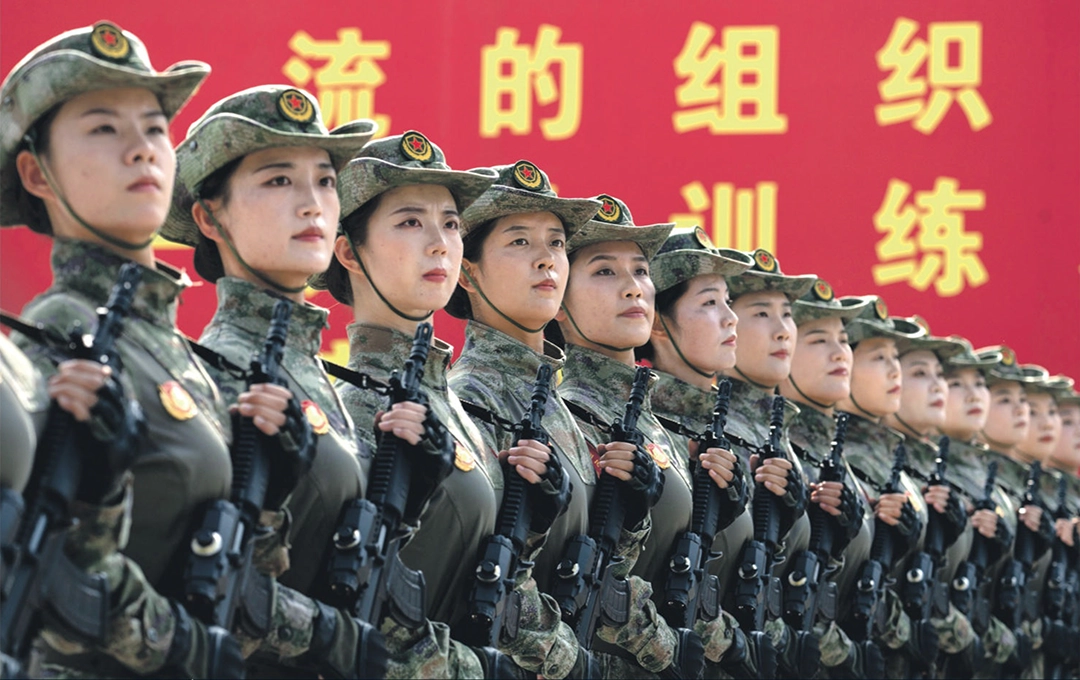
The 80th anniversary of Japan’s surrender at the end of the Second World War. The parade held today, 3 September, also commemorates the conclusion of the Second Sino-Japanese War, known in China as the Chinese People’s War of Resistance Against Japanese Aggression.
Photograph by Kevin Frayer/Getty. The Guardian Weekly. Vol. 213. No. 9. August 29th, 2025.
This image seized my attention at once. I suppose it was conceived—or chosen—precisely to provoke that effect on a massive scale. Within the advancing ranks of women soldiers of the People’s Liberation Army of China, one face stands out: the second from left to right. Is it mere chance?
Amid the disparate and variegated set of expressions, the configuration of each face imparts a particular density. The one that concerns me—perhaps because of the severity of its mandibular contour—reveals an androgynous accent that points to an unresolved problem of gender. Disturbing though it is, it is also significant, for it offers a point of departure for rereading the image as a whole.
Aligned in perfect symmetry, dressed in uniforms that combine the regular with the camouflaged, they advance inexorably, like a small domestic tsunami, an unstoppable surge of discipline moving with overwhelming precision.
The rigidity of their bodies and the frontal intensity of their gazes transmit an uncompromising discipline. There is no space for individuality: each face echoes the next, in a “mirror effect” that dissolves the singular in favor of the collective.
The red background is an ideal semiotic frame, functioning less as backdrop than as political sign. It refers directly to the communist imaginary: red as blood and revolution, yellow as glory and nation.
The Master’s Eye
Under the gaze of military and political power, attitude is not merely physical; it responds to ideological demand. It is the sign of perpetual obedience, of the need to maintain an unquestionable mask under control.
For a century, totalitarian communism has relied on the military aesthetic as social pedagogy. The citizen must always be prepared to become a brick in the collective wall, ready to erase any trace of individuality from the public image. Woman, historically associated with care, appears here reconfigured as an armed symbol of the homeland. And therein lies the paradox: such visibility produces an identitarian dissolution. They are seen as collective, not as subjects. And the group, in turn, projects the image of a power legitimized by bodily synchrony and the discipline of the gaze.
More than a martial exercise, this parade is a metaphor for society under totalitarianism. Each entity is sustained by the rigor of repetition. The logic of power dictates that the control of gesture transmutes into control of thought. This visual apologia of obedience is the ritual by which power instructs, subjugates, and perpetuates its dominion.











Comments powered by Talkyard.